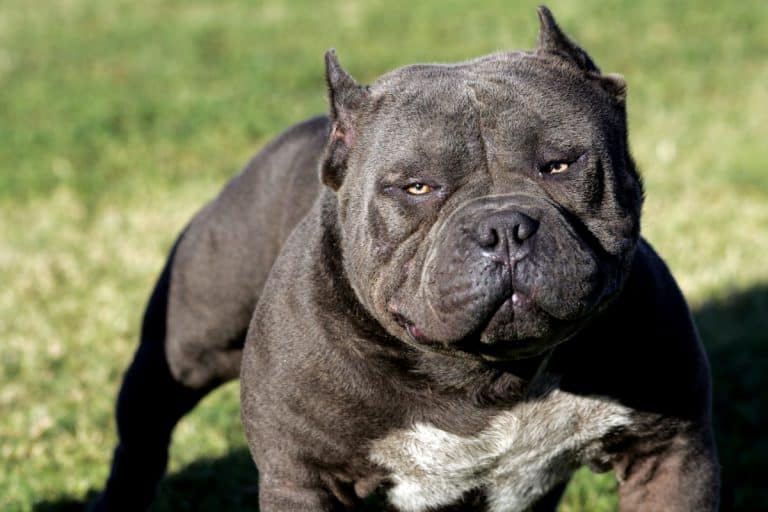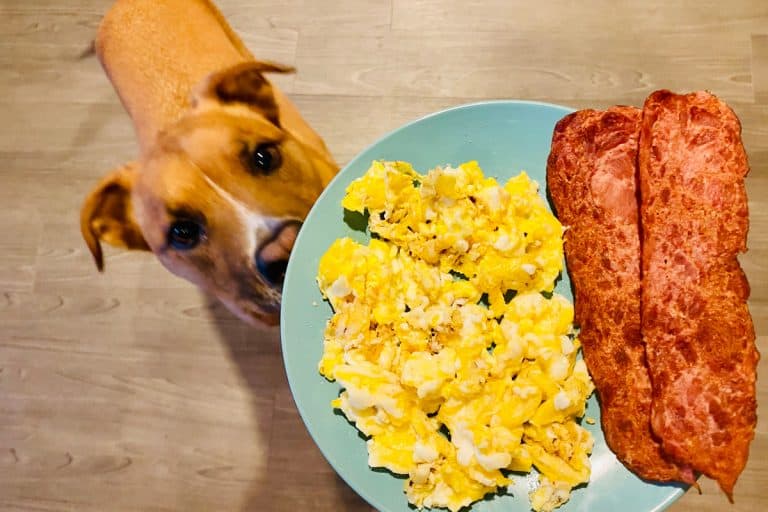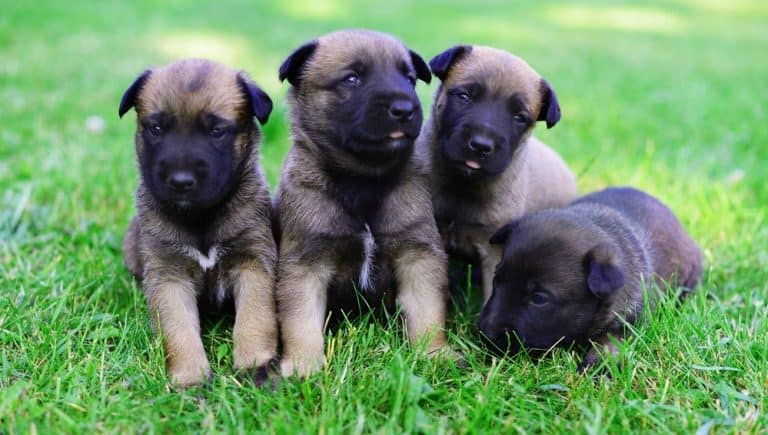When Should You Start Feeding Puppies Wet Food?
Puppies grow up so fast and owners may lose sight of just how quickly they develop. When they develop, owners need to be keeping up with their needs and changes in diet.
So when exactly should puppies begin eating wet food?
Making sure your puppy has the right diet is so important. It helps them add muscles as they grow, supplies them with energy to get through the day, helps them to build strong bones and teeth and so much more.
At some point in the puppy’s development, the mother is going to decide nursing is not needed anymore and their young needs to be introduced to wet food.
She will give the puppy less milk as a result of multiple things such as weak lactation or that the puppies are starting to hurt her when feeding using their milk teeth.
This means as an owner, you need to monitor the food intake of your pup so you know when the right time is to introduce them to puppy food.
Most dogs will be introduced naturally but as a dog parent, it wouldn’t hurt to lend a helping hand.
When Should I Begin Giving Wet Food To My Puppy?
So, what exactly is the answer to this? In short, most puppies will need to be given wet food once they reach around 3-4 weeks old. The reason for this is that this is when the weaning process begins.
Weaning is when the puppy transitions in terms of diet from drinking the milk from the mother to a solid diet which is fed by you and most experts stick to 3-4 weeks as a guideline for the following reasons:
- This is when puppies start growing milk teeth. As we have mentioned in the beginning, this can hurt the mother when feeding as they are very sharp.
- With milk teeth, puppies are capable of chewing on regular and solid foods.
- At this stage in a puppy’s development, it is common for puppies not to get enough calories for energy from the mother’s milk alone.
- The discomfort of milk teeth on the mother might mean the mother starts to pull away before the puppy gets enough milk and this will mean the puppy is still hungry and will start to search for other forms of food.
However, 3-4 weeks is only a guideline and there will be pups out there who need longer than this to develop milk teeth and be ready to move away from the mother’s milk.
Examples of these puppies include orphaned puppies or puppies with behavioral problems and so you need to keep this in mind when helping them with the transition.
However, the best time to start feeding your puppy wet food if you are unsure in this scenario would be when you see that the mother is running low on milk supply and is not leaving the puppy satisfied.
Another hint is whenever you start to notice milk teeth appear on the puppy.
It is recommended that you begin your puppy on solid food as soon as possible as this will then put less strain on the mother.
The sooner you move them away from the mother’s milk and onto solid foods, the sooner they will get back their energy and return to a healthy weight.
If you have hand-raised the puppy, the sooner they are on wet food, the better.
Tips On Introducing Wet Food

- Natural weaning means the mother is going to regurgitate food for her little ones. Some mother dogs you will find will do this and it should not be a worry as it is a maternal instinct from mother dogs.
- Since puppies have such small stomachs, they cannot eat as much food in one sitting. This means when you introduce wet food to them, ensure you are giving them small amounts little and often instead of big portions that are quite staggered.
- If the puppies seem uninterest in the wet food you offer them in the transition, you should maybe try dipping in your fingers and touching their mouths gently with it so they can have a small taste before digging in. However, they might get a little messy when trying new food on their own and so making sure you have a few doggy bibs could be an idea!
- The stomach of puppies are very sensitive and can get upset quite easily. This means you should change the food sparingly and if you so decide to change up the wet food, make sure you are allowing them enough time so that they can adjust. You can also switch things up by mixing 25% of the new food and adding in 75% of the old food and increasing the percentage of the new food slowly until you are feeding them a whole bowl of the new food.
- Some canine nutritionists suggest giving your puppy wet food that has been left at room temperature as it not only improves the smell but it is easier for younger puppies to digest. If you sometimes refrigerate your puppy food, you should remove it from the refrigerator a few hours before it is feeding time or microwave the food for a few minutes before serving if you do not have time for this.
- Some breeders will start by giving the mother wet puppy foods too as this will give her some extra nourishment and calories, but will also encourage the puppies to copy their mother and start eating the wet food too. Puppies might start by eating a small bit of their mother’s food and this could also be a sign that your puppy is ready to be fed on the same food or to be weaned.
- Every puppy will eventually get used to and accept wet food when they are ready. This means if you are noticing one puppy is not at that stage yet, you should carry on giving them the food in presence of another puppy who has accepted wet food already.
- Food hygiene should also be a priority when feeding your pup wet food and this ensures there will be no cross-contamination and everything is kept safe and clean to eat.
- When introducing wet food, you should keep a close eye on your puppy and work with your vet to find a diet that is specific to your puppy’s needs. For example, a Calcium-phosphorus ratio should be balanced for puppies otherwise you might end up with puppies who have orthopedic issues such as osteochondrosis or even hip dysplasia.
Steps For Weaning Puppies
How you wean your puppy will be personal and working with your vet is your best option. However, as a guideline, you could follow the steps below:
- Making Gruel
Make up a gruel that consists of puppy food and water or milk replacement. Keep the puppy food grain-free and if they are still not taking the gruel try a ratio of 2 cups of the food, 12.5 ounces of the milk replacer, and 2 cups of water.
- Offering The Gruel
During an hour-long period of separation from the mother, you should offer them the gruel in a short and shallow dish. If the puppies seem uninterested, as we have mentioned, try the finger-dipping method.
- Reuniting The Pups and Mother
When you have reunited the puppy with the mother, you should allow the mother to lick away any remaining bits of food from the dish and lick the puppies completely clean.
- Gradually Increase The Amount of Puppy Food
When introducing wet food, you should start by feeding them a diet consisting of only 10% solid food and the gruel should be made with less and less liquid until it consists of only wet food and the pup can eat the food without diluting it first.
You should then continue increasing the amount of food they eat until it is 100% solid. They should be around 7-8 weeks of age at this point.
Final Thoughts
We hope you have enjoyed this article on when you should start feeding puppies wet food and understand how it is a process that takes patience, time, and monitoring from the owner.
As a rule of thumb, when they are 3-4 weeks old, they should be introduced to wet food, but each pup is different so keep an eye out for the signs in this article first!






